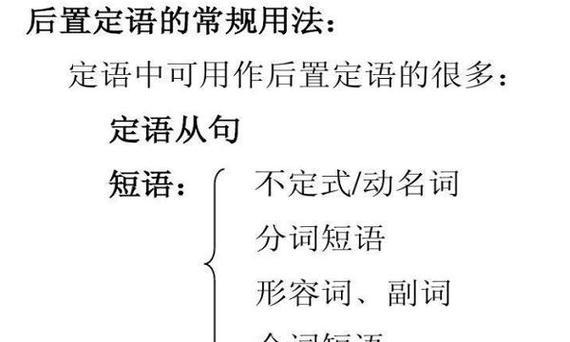在英语语法中,定语后置通常满足以下条件:多个定语修饰同一名词时,最长的定语后置;定语是从句或介词短语时,通常放在名词或代词后面。这种方式可以增强语言表达的准确性和规范性。

定语后置是指定语放在名词或代词的后面,用以修饰它们。如:
- The book I read yesterday was very interesting.
- The girl wearing a red dress is my sister.
那么如何判断定语是否应该后置呢?
一般而言,定语后置需要满足以下几个条件:
- 多个定语修饰同一个名词时,后置定语往往是最长的一个,前面的定语通常是形容词、代词或短语。如:
- The man who is sitting on the bench is my uncle.
- The car with the broken window is mine.
- 当定语是从句时,往往需要将该从句放在名词或代词的后面。如:
- The person who you met yesterday is my boss.
- The book that I borrowed from the library is due next week.
- 当定语是介词短语时,通常放在名词或代词的后面。如:
- The girl in the red dress is my sister.
- The movie with the great special effects is worth watching.

